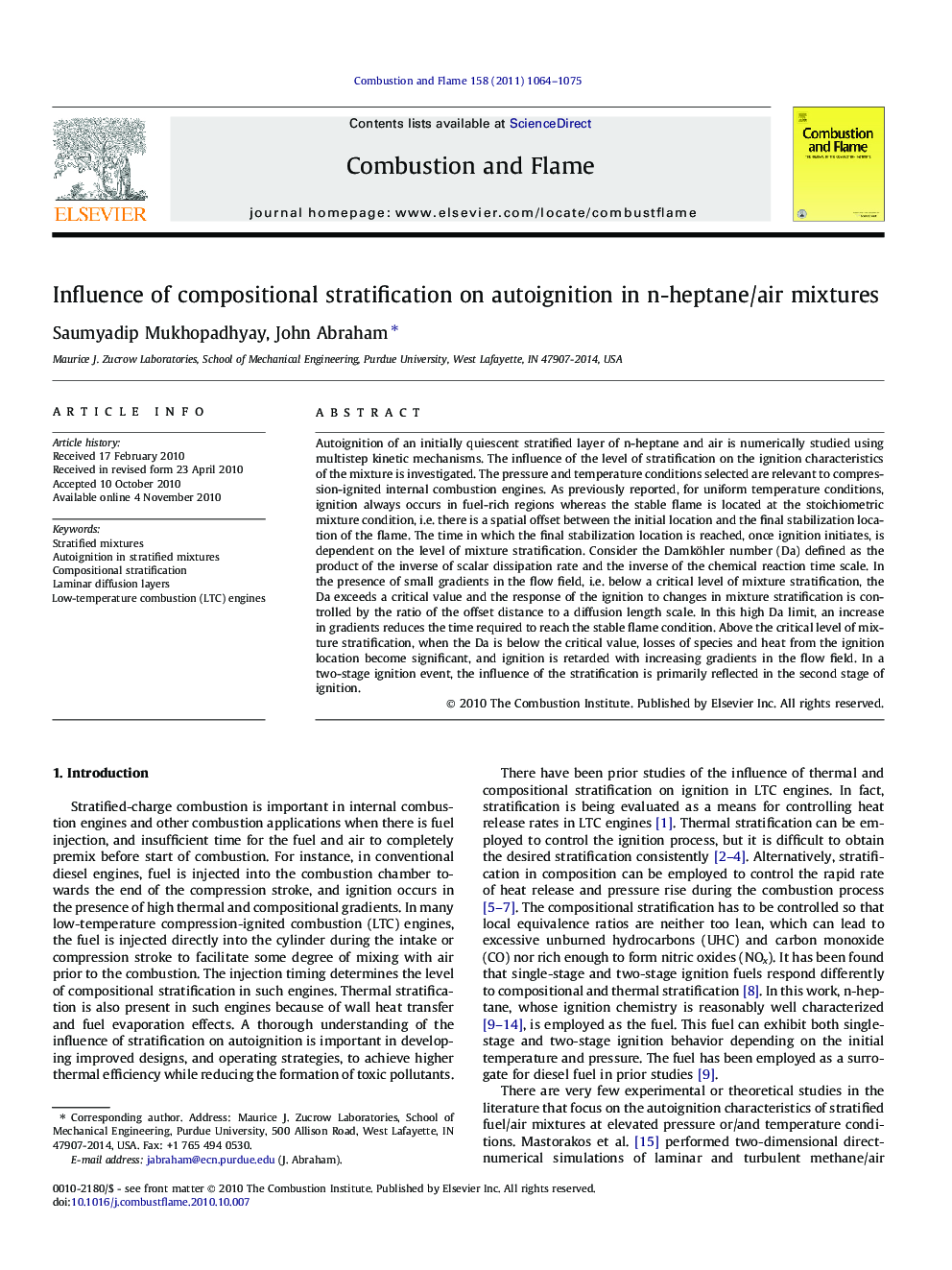| Article ID | Journal | Published Year | Pages | File Type |
|---|---|---|---|---|
| 169862 | Combustion and Flame | 2011 | 12 Pages |
Autoignition of an initially quiescent stratified layer of n-heptane and air is numerically studied using multistep kinetic mechanisms. The influence of the level of stratification on the ignition characteristics of the mixture is investigated. The pressure and temperature conditions selected are relevant to compression-ignited internal combustion engines. As previously reported, for uniform temperature conditions, ignition always occurs in fuel-rich regions whereas the stable flame is located at the stoichiometric mixture condition, i.e. there is a spatial offset between the initial location and the final stabilization location of the flame. The time in which the final stabilization location is reached, once ignition initiates, is dependent on the level of mixture stratification. Consider the Damköhler number (Da) defined as the product of the inverse of scalar dissipation rate and the inverse of the chemical reaction time scale. In the presence of small gradients in the flow field, i.e. below a critical level of mixture stratification, the Da exceeds a critical value and the response of the ignition to changes in mixture stratification is controlled by the ratio of the offset distance to a diffusion length scale. In this high Da limit, an increase in gradients reduces the time required to reach the stable flame condition. Above the critical level of mixture stratification, when the Da is below the critical value, losses of species and heat from the ignition location become significant, and ignition is retarded with increasing gradients in the flow field. In a two-stage ignition event, the influence of the stratification is primarily reflected in the second stage of ignition.
